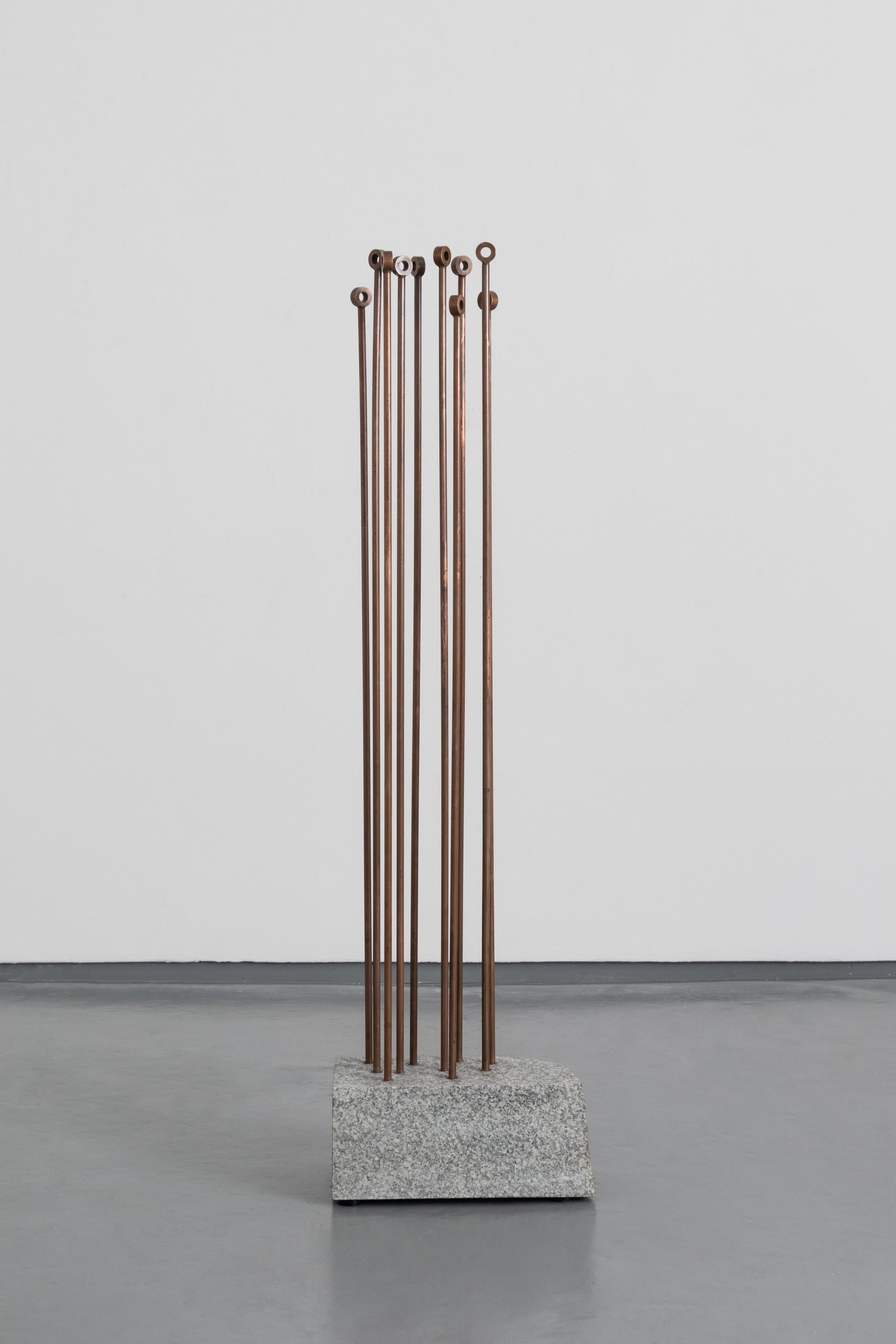Ashleigh Mclean, co-founder of WHATIFTHEWORLD: an interview
We sat down with Ashleigh Mclean to discuss how to get free from the stereotypes about African art and its nature.
For reasons that are better explained through psychology than art history, it may seem easier to discuss African art in general, rather than focusing on each State of the Continent, or on the individual artists who are its contemporary expression in the arts. In recent times, we saw a similar pattern with China and India. Is this a massive miscalculation that needs to be rectified as soon as possible, or is it a necessary step in the process? Does it make sense to generalise, or does the tendency to simplify only result in creating clichés that are then impossible to escape, and which tend to become more entrenched when racial issues are present?
We spoke about this topic with Ashleigh Mclean, co-founder with Justin Rhodes of the What If The World gallery in Cape Town, premising that “ to give primacy to the work of art and cultural object does not necessarily mean that they become isolated or insulated from the intrusion of other social and critical logics” (Okwui Enwezor, Intense Proximity, Palais de Tokyo, 2012.

How would you describe the What If The World programme?
Ashleigh Mclean: When our gallery opened in 2008, we began by showing emerging artists who were our peers. I started as an artist myself. There was still a lot to be done regarding inclusion and diversity because of the historical lack of access to resources in South Africa for non-white, non-male artists. Thankfully, this demographic has changed, and our program reflects this.
Social changes have created an environment and, most importantly, an audience for artists from diverse backgrounds and different African countries. South Africa was a pariah for a long time and, to a large extent, still is separate from the rest of the continent; thankfully, those boundaries are becoming more porous. Although much more must be done, we have tried to be a catalyst in that change by incorporating artists from Zimbabwe, Namibia, Nigeria, Ghana, Egypt and Algeria into our program. An international presence in Europe and America has always been important to us. We were one of the first galleries to begin exhibiting in international fairs, with our first fair in Basel in 2009. We regularly participate in art fairs in Brussels, Milan, Turin, New York, Chicago, Miami, Paris, and Cologne.
We also have a residency program on the Twee Jonge Gezellen farm, 90 minutes from Cape Town, and have participated in numerous international institutional exhibitions and biennales.
It has always been essential for us to be mindful of preconceived notions of “African artists” and present work regardless of what the market or Western institutions’ expectations might pigeonhole as “African.” We show sculpture, painting, installation, moving image, print, textiles, and ceramics by various artists.
Many artists we work with are investigating themes like ancestral knowledge, indigenous spirituality, or different learning modes, following the desire for decoloniality in South Africa, particularly in the universities. Queer african artists of all races are bringing a range of critical and aesthetic positions into the mix.
We see it as important to showcase these themes, as well as more traditional genres, like still-life paintings, for example. Showing a painting of a bunch of flowers is kind of a rebellious act because it flies in the face of what an “African” artist is expected to produce and counters a perception of a monoculture of an “African Aesthetic.”
As the gallery owners, our choices are also informed by our aesthetic preferences and a desire to balance critical discussions and commercial considerations, to create a sustainable framework to support our artists and ourselves.

Could you elaborate on that? How could showing paintings of flowers be a rebellious act?
Ashleigh Mclean: During apartheid, it was the role of the artists to be the dissenters, to carry the mantle of political protest. During this time, many artists who made works about dreams, memories, love, or anything else were not considered relevant. So quite a few creative outputs were disregarded. That has changed, but I still think there is a lot of latent pressure on South African artists to make politically or socially critical work.
That’s why I think it is equally important to show work about intergenerational trauma, for example, or to show the artist who wants to make a surrealist painting, or paint a bunch of flowers in their bedroom. At the end of the day, it’s all about validating the multiplicity of the creative act. It is also essential for artists to feel able to make work like this and to allow themselves time to heal and reflect. As many of our artists have taught me, self-care can also be a radical act.
In recent years, there has been more interest in defining the nature of African contemporary art than in understanding its real quality, as if geography or race counted more than expressive means and outcomes. Why?
Ashleigh Mclean: During the last decade, many curators have come to South Africa looking for artists; but they had often conceived the idea for the exhibitions that they wanted to put on before coming here. So they came looking for artists that would fit into a preordained plan, rather than truly engaing with what was actually happening here. This whole focus on geography, genetics, and racial issues ended up into a weird feedback loop, where instead of generating new ideas, they were inadvertently reinforcing existing stereotypes. As an artist, the only thing that you had to do to be included in the show was to be a ‘typical’ young South African artist, or a gay South African artist maybe. In our case, even showing paintings of pretty flowers can be seen as a kind of political act, because it defies the expectations placed on what an African artist is supposed to produce.

I see, but now it looks like painting is the only medium African artists are interested in. Have we gone too far?
Ashleigh Mclean: That is precisely the type of perception our program would refute. Painting is most certainly not the only medium. There has been a wave of figurative paintings that has got much attention, possibly because they are more straightforward to consume. I think quite a bit of the less nuanced figurative work has been shaped by the market desire. As has also been the case with European painting.
There was an awakening in many institutions ( overdue and necessary) to rectify omissions of representation, and painting is an easy way to do that. Painting is historically dominant in Western European museum collections and is what the market values most highly. It makes sense that the “Black” painting boom reflected these realities.
Considering how wide and diversified the entire continent’s visual art production could be, would you say it’s possible to summarise it in several positions or formal features?
Ashleigh Mclean: It’s always easier to essentialise or generalise. Historically, the West has always sought to simplify Africa, the Middle East, and the Far East. It’s not easy to condense such diverse output, but one can pull on some threads.
Representation is a key theme. Artists are trying to situate themselves within a framework traditionally dominated by Western hetronormative narratives. Another prevalent theme is the reclamation and reinterpretation of personal and public archives. Acknowledging lost histories is a big part of what many artists are doing now; this can happen on so many different levels.
Many artists working on the continent are informed by their access to specific materials, and the type of materials they use is very rooted in geography. They are made from the “stuff of life,” as in the case of internationally renowned artists like El Anatsui or Ibrahim Mahama.
The fabric of the materials the artists use here is intrinsically embedded with the socio-political reality of the place. For example, we work with an artist, Lungiswa Gqunta, who uses razor wire, petrol, and indigenous plants in evocative installations, and Chris Soal, who uses electric fencing cable and beer caps.
The connection to the land is a very prevalent theme across the board. People need to come to terms with a lot of pain in terms of historical dispossession, and also being the descendants of settlers. Land is linked to conquest, trade, settlement, migration, reclaiming or finding identity.

How do you see these features evolving?
Ashleigh Mclean: The diversity and complexity of themes and modes of production is growing. The demographic of students graduating from universities has changed radically in the last 30 years, which is impressive, even in the previous ten years. We now have a far more mixed demographic of people formally trained in the visual arts. We also have a much more layered and professional arts ecology with artist-run spaces, private foundations, and residencies supplementing and enriching the gallery and academic structures. South Africa is a leader on the continent in this respect.
Is the international art infrastructure shaping African art production or vice versa?
Ashleigh Mclean: The international art infrastructure is influencing our production. As a gallerist, I have to contend with this, particularly with what happened with portraiture, which was definitely shaped by the demands of the market.
Furthermore, it has to be noted that art collecting on the African continent is still very much developing, so there are relatively few art collectors on the continent compared to European and American collectors. Thus, the people who are buying the work of African artists are overwhelmingly non-African. The wealth, appetite and culture of collecting are still very rooted in those regions.

Originally produced by the Zeitz Mocaa under Gucci sponsorship and showcased at Basel Kunstmuseum during the Art Basel last edition, and more recently also at Bozar in Brussels, When We See Us has been a sort of milestone exhibition for black painting at least. The show is indeed dedicated to “a century of black figuration in painting”, which is a broader and somehow different concept from purely African art. Nevertheless, the exhibition catalogue editor, Koyo Kouoh, who will curate the next Venice Biennial, opens her introduction by quoting Zeitz Mocca’s mission, which is more focused on the idea of African art than on black art in itself. Would you comment on that? Does the Zeitz Mocaa address the racial challenges still at the core of the matter?
Ashleigh Mclean: I think there is a clear distinction here between African and Black art.
As far as I understand it, Zeitz’s ethos is to promote art from a geographic region, made by African artists and the diaspora. When We See Us is a focused exhibition on black painting by black artists.
In South Africa, it’s impossible to operate without taking racial considerations into account, as they define so much of our lived experience.
However, Zeitz is an African institution with a global outlook, headquartered in South Africa. South African dynamics do not dictate its many programs and exhibitions. I am not involved with the museum, although I assume it would need to consider these issues as it is located in SA.
The introduction text of the show you’re presenting at CFAlive at some point says “with its complex sociopolitical landscape and distinctive vernacular materiality, South Africa resonates deeply with this sensitivity”. The sensitivity under question is the materials related one typical of the Arte Povera movement, which spreaded around internationally, but started from very local positions. Is that the correct pattern we should follow?
Ashleigh Mclean: I find it an interesting line of enquiry. In my experience, people respond well to something they can recognise as familiar in an artwork. Having a thread of connection is often very valuable in destabilising expectations about what an “African” artist is. In my opinion, there is a correlation between South Africa and Italy in terms of this shared material sensibility, and by exploring it we open an interesting discussion.
May 3, 2025
